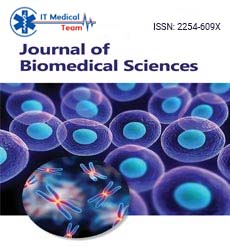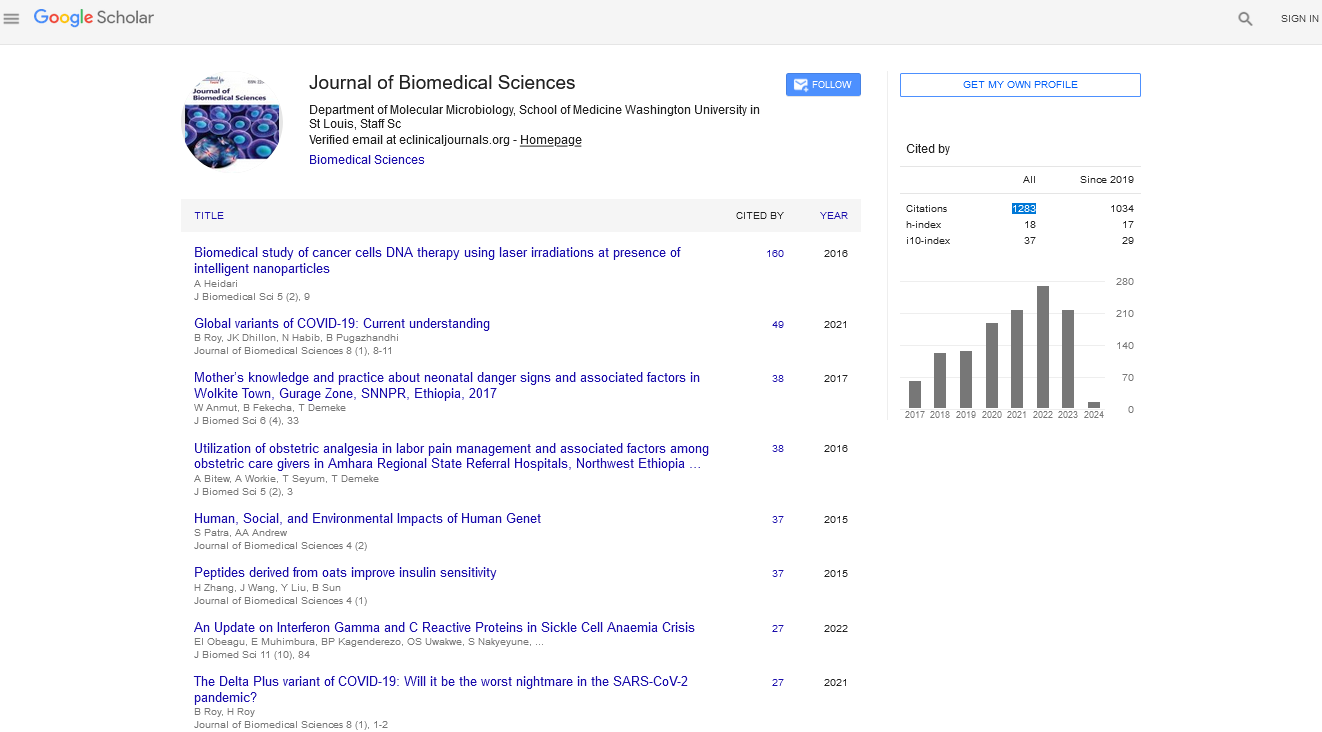Perspective - (2024) Volume 13, Issue 6
Biomedical Imaging Techniques: Innovations and Applications
Pascal Macharia*
Department of Biomedical Sciences and Technology, Maseno University, Kisumu, Kenya
*Correspondence:
Pascal Macharia, Department of Biomedical Sciences and Technology, Maseno University, Kisumu,
Kenya,
Email:
Received: 15-Nov-2024, Manuscript No. IPJBS-24-15315;
Editor assigned: 19-Nov-2024, Pre QC No. IPJBS-24-15315 (PQ);
Reviewed: 03-Dec-2024, QC No. IPJBS-24-15315;
Revised: 13-Dec-2024, Manuscript No. IPJBS-24-15315 (R);
Published:
20-Dec-2024
Introduction
Biomedical imaging techniques play an essential role in
modern healthcare, offering insights into the human body’s
internal structures and functions without invasive surgery. Over
the years, significant advancements in imaging technology have
led to innovations that improve diagnostic accuracy, patient
outcomes, and understanding of complex biological processes.
From advanced MRI scanners to hybrid imaging systems and
molecular imaging techniques, these innovations are
transforming research and clinical practice across a wide range
of applications. This article explores the latest innovations in
biomedical imaging, their applications in medical diagnosis and
treatment, and the challenges facing the field.
Description
Applications of biomedical imaging techniques
Biomedical imaging techniques have a wide range of
applications, from diagnosing diseases to aiding in therapeutic
interventions and advancing research.
Cancer detection and monitoring: Imaging techniques like CT,
MRI, and PET play a critical role in detecting tumors,
determining cancer stage, and assessing treatment response.
Hybrid imaging, such as PET-CT, helps differentiate between
malignant and benign tissues. Molecular imaging enables
oncologists to monitor the metabolic activity of tumors,
providing valuable information about tumor aggressiveness and
treatment efficacy.
Neurological disorders: Neuroimaging techniques, such as
MRI and PET, are essential for diagnosing and monitoring
neurological diseases like Alzheimer’s, Parkinson’s, and multiple
sclerosis. Functional MRI (fMRI) allows researchers to study
brain activity and connectivity, helping identify potential
biomarkers for mental health conditions, such as depression and
schizophrenia.
Cardiovascular disease: Cardiac imaging techniques, such as
ultrasound, CT, and MRI, are used to evaluate heart structure
and function. For instance, cardiac MRI can assess blood flow,
heart muscle viability, and vascular health, aiding in the
diagnosis of conditions like coronary artery disease and heart failure. Innovations in 4D imaging also allow clinicians to see the
heart in motion, providing insights into abnormal blood flow or
valve dysfunction.
Orthopedics and musculoskeletal imaging: X-rays, CT, and
MRI are commonly used to diagnose bone fractures, joint
problems, and soft tissue injuries. Recent advancements in 3D
imaging have improved surgical planning for joint replacements,
spinal surgeries, and trauma repair. High-resolution MRI and
ultrasound imaging are increasingly used to assess muscle,
tendon, and ligament injuries.
Prenatal and fetal health: Ultrasound remains the primary
tool for prenatal imaging, allowing clinicians to monitor fetal
development and detect any congenital abnormalities.
Advanced 4D ultrasound provides real-time images of fetal
movement, which can help assess growth and detect potential
developmental issues.
Gastroenterology and abdominal imaging: Endoscopic
Ultrasound (EUS) and MRI are commonly used to visualize the
gastrointestinal tract and liver. MRI, for example, can help
diagnose liver diseases, such as cirrhosis, and assess
inflammation in cases of Crohn’s disease. PET scans are also
used in liver imaging to detect cancer metastasis or evaluate
liver function before transplants.
Pulmonary imaging: Techniques like CT and MRI are critical
for diagnosing lung diseases, such as Chronic Obstructive
Pulmonary Disease (COPD), pneumonia, and lung cancer. Highresolution
CT scans are particularly useful in visualizing the small
airways and lung structures. Recently, PET imaging has been
explored for monitoring inflammation in lung diseases and
assessing tumor metabolism in lung cancer patients.
Challenges in biomedical imaging
While biomedical imaging has made significant strides, several
challenges remain in its application and development:
Radiation exposure: Techniques like X-rays and CT scans
expose patients to ionizing radiation, raising concerns about
cumulative exposure, especially in patients requiring frequent
imaging. Reducing radiation dosage without compromising
image quality is a major goal of ongoing research.
Cost and accessibility: Advanced imaging equipment, such as
MRI and PET scanners, is expensive and often requires
specialized facilities and personnel. This limits accessibility,
particularly in low-resource settings. Developing portable and
cost-effective imaging solutions is essential for broadening
access to imaging services.
Image processing and data overload: The large volume of
data generated by high-resolution imaging can be challenging to
process and interpret. Integrating AI algorithms for automated
image analysis can help address this issue, but AI models must
be trained with high-quality data to ensure accuracy and
reliability.
Patient comfort: Some imaging procedures, such as MRI,
require patients to remain still in enclosed spaces, which can be
uncomfortable or anxiety-inducing. Innovations in open MRI
design and faster scanning technologies aim to improve the
patient experience and reduce discomfort during imaging
procedures.
Interpretation and training: Accurate image interpretation
requires skilled radiologists, and there is often variability in
readings. Providing training for radiologists in new imaging
modalities and integrating AI as an assistive tool can help reduce
interpretative errors and improve diagnostic consistency.
Conclusion
Advancements in biomedical imaging techniques are shaping
the future of diagnostics, research, and personalized medicine.
With innovations such as hybrid imaging, AI-assisted diagnostics,
and portable imaging devices, the potential of these
technologies to enhance patient care and expand research
capabilities is vast. Addressing challenges such as radiation
exposure, cost, and data processing will be essential to fully
realize the benefits of biomedical imaging. As research
continues, biomedical imaging will remain a cornerstone of
modern medicine, offering new insights into disease
mechanisms, treatment efficacy, and human physiology.
Citation: Macharia P (2024) Biomedical Imaging Techniques: Innovations and Applications. J Biomed Sci Vol:13 No:6





